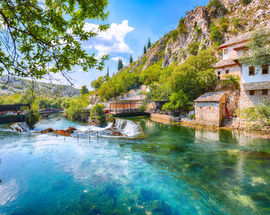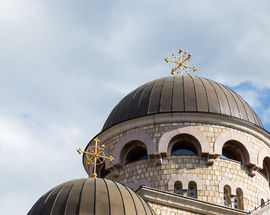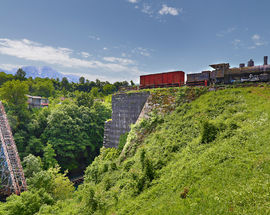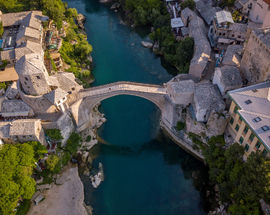Not Just Bosnia: The History & Culture of Herzegovina
more than a year agoSo where to begin? Well, to make things just a little more confusing, there is no clearly defined geography when it comes to separating Bosnia & Herzegovina; you just sort of know. Herzegovina is generally considered to cover the south of the state, everything from Konjic down to the borders with Croatia and Montenegro, with a portion of the latter being known as Old Herzegovina. Mostar is the largest city and regional capital, the only town with more than 100,000 people and the cultural centre of the Herzegovina. There is more to Herzegovina than Mostar though — you’ll find religious pilgrimage in Međugorje, ancient civilisations in Stolac, stunning waterfalls near Ljubuški and the most picturesque village in Počitelj — much, much more.
The name ‘Herzegovina’ is generally believed to come from the 15th century leader Stjepan Vukčić Kosača, the Grand Duke of Bosnia who declared a somewhat independent area in the south, naming himself the ‘Herzeg of Saint Sava’, giving rise to the name Herzegovina (essentially ‘Herzog’s Land). Vukčić died in 1466, giving the people of his eponymous region just 16 years of freedom before the Ottomans swanned in and took over, establishing the Sanjak (administrative area) of Herzegovina, within the Bosnia Eyalet (province). Herzegovina became its own eyalet in 1832, which lasted less than 30 years before it was merged with Bosnia in 1853. Then came the Kingdom of Serbs, Croats and Slovenes, then Yugoslavia, then World War II, then Yugoslavia again, then an independent Bosnia & Herzegovina.
So why didn’t Herzegovina try to gain independence during the Bosnian War? Woah, easy there, some boxes shouldn’t be opened! It did, with the proclaiming of the Croatian Republic of Herzeg-Bosna, although this came to an end when the Americans convinced the Croats and the Bosniaks to join forces as opposed to fighting each other. And thus, the Bosnia & Herzegovina we know and love today.
These people are tough, make no mistake about it. The terrain in these parts is unyielding, harsh land that requires discipline, determination, courage and bravery. Luckily, the Herzegovinians have these qualities in spades. Catholicism is the dominant religion, and you are overwhelmingly more likely to see Croatian flags than Bosnian ones around the area, laying clear the historic and cultural direction in which the Herzegovinians are looking. Herzegovina might be forgotten in the speeches of many tourists, but the area itself demands attention. The architecture of Mostar, the views of Počitelj, the stečci of Stolac, the natural wonder of Kravice, the sea at Neum, the miracles of Međugorje, the beauty of Trebinje and a whole lot more — Herzegovina really is a land that aims straight for the heart.









Comments